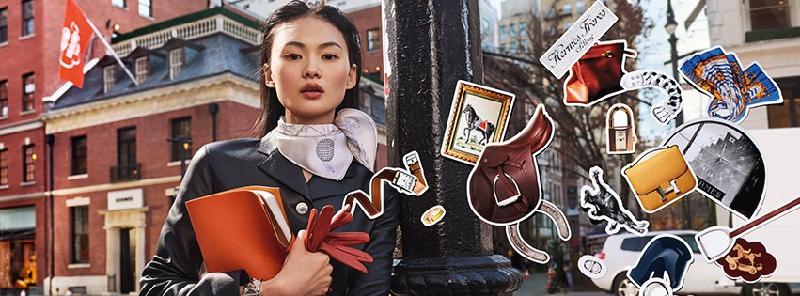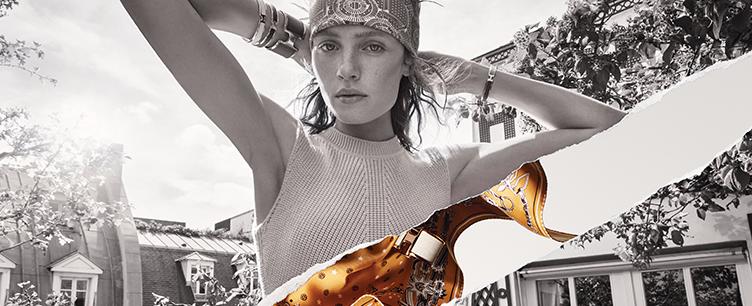It’s no secret that luxury brands like Hermès and Louis Vuitton make a killing selling extravagant handbags, $1,200 sneakers, and accessories with price tags that make the average person gasp. But did you know that these high-end labels can also predict economic trends? Yes, those iconic monogrammed Louis Vuitton bags and Birkin handbags may be whispering secrets about inflation, recession, and the middle class’s role in it all. Let’s dive into the glitzy world of luxury goods to understand how they forecast economic shifts and why the real drivers of this market aren’t the ultra-rich, but the middle-class aspirants trying to look like them.
Luxury Brands: Fashion Forecasting Meets Economic Forecasting
Luxury brands have always been good at keeping up appearances, but they’re also eerily good at predicting economic shifts. When times are good and people feel secure, they splurge on high-end fashion, buying the latest Louis Vuitton or Hermès item to showcase their status. But when inflation kicks in or a recession looms, these sales start to dip. This shift in luxury spending isn’t just a sign of changing trends—it’s a sign that something larger is happening in the economy.
So, what’s the logic behind this? It’s simple: luxury items are discretionary purchases. They’re not food, shelter, or healthcare—things people need. They’re things people buy when they feel financially comfortable or, better yet, thriving. When even the middle class starts pinching pennies and cutting back on luxury, that’s when brands like Hermès and Louis Vuitton start sweating.
Luxury brands are so good at forecasting economic health that some economists even track luxury sales as early indicators of a downturn. When sales from high-end houses start slowing down, it’s a sign that people are feeling the pinch—and not just the average Joe, but middle-class and upper-middle-class shoppers who aspire to a more affluent lifestyle.
The Middle Class: The Secret Engine Behind Luxury Brands
Now, here’s where things get really interesting. You might think the ultra-wealthy are the ones keeping luxury brands afloat, but the real engine of the luxury market is—you guessed it—the middle class. Or more accurately, the aspirational middle class. This group is the lifeblood of brands like Louis Vuitton and Hermès because they’re the ones who truly need these items to signal status.
For the middle class, owning a luxury item is often seen as a way to prove they’ve made it. It’s a badge of success, a way to display social mobility, and an indicator that they’re part of a more exclusive club. Louis Vuitton bags aren’t just functional accessories; they’re signals to the world that the person carrying them has disposable income, taste, and, most importantly, status.
This is why many middle-class consumers are willing to save up for months (or even years) to buy that one luxury item—be it a Birkin, a Gucci belt, or a pair of Louboutins. It’s not about needing the item; it’s about wanting to be seen as someone who can afford it. As long as the middle class aspires to “level up” and show off, the luxury market keeps humming.
But here’s the irony: the truly wealthy don’t need to bother with this.
The Ultra-Rich: Luxury’s Secret Rebels
While the middle class scrambles for luxury labels, the ultra-rich—the 1%—are quietly spending their fortunes on things most people haven’t even heard of. If you think billionaires are rolling up to events in head-to-toe Louis Vuitton, think again. The ultra-wealthy prefer niche brands and bespoke experiences, things that don’t need to scream “I’m rich!” because, well, they don’t have to.
Think about it: the richest of the rich don’t need a Chanel handbag to prove they’ve made it. They’re too busy buying private islands, investing in art that costs more than your house, and commissioning one-of-a-kind couture pieces that never see the light of Instagram. For them, true luxury is understated, exclusive, and, most importantly, unbranded. They don’t need to showcase their wealth—it’s already a given.
So, when luxury brands like Louis Vuitton and Hermès start seeing sales dip, it’s not because the ultra-wealthy are cutting back—it’s because the middle class, the real consumers of “status luxury,” are feeling the economic squeeze.
Inflation and the Luxury Market: A Delicate Dance
Now, let’s talk about inflation. Inflation is the rising cost of goods and services, and it can have a complicated relationship with luxury brands. On one hand, luxury items can become more expensive as production costs rise. But on the other hand, luxury brands have a unique ability to withstand inflation better than most industries.
Why? Because for many luxury consumers, price increases are almost part of the allure. A more expensive handbag only makes it more desirable, as it signals exclusivity. When inflation drives up the price of a Louis Vuitton bag, for instance, it can actually make the product more appealing to those seeking status. As long as the middle class is still willing to save up for it, luxury brands will thrive.
However, there’s a tipping point. If inflation continues unchecked, it can erode the disposable income of the middle class. Suddenly, those aspirational shoppers can no longer justify spending thousands on a handbag when groceries and rent are eating into their budgets. And when that happens, luxury brands start to see a real downturn in sales—indicating that economic troubles are spilling over into even the wealthier strata of society.
The “Affordable” Luxury Conundrum
Luxury brands are keenly aware of this dynamic, which is why we’ve seen the rise of “affordable luxury” in recent years. Think of Michael Kors, Coach, or even certain lines from Louis Vuitton—luxury labels that offer more accessible price points. These “entry-level” luxury items are designed to hook aspirational middle-class shoppers who might not be able to afford the top-tier products but still want to dip their toes into the world of luxury.
This strategy works brilliantly during times of economic stability but can backfire in recessions. As the middle class cuts back, even these lower-tier luxury items can seem like unnecessary indulgences. What once felt like a status symbol becomes a frivolity, and suddenly, sales for these “accessible” luxury goods tank, too.
Luxury Brands as Economic Fortune Tellers
So, can Hermès and Louis Vuitton predict a recession? Absolutely. Their performance is tightly linked to how comfortable the middle class feels about their finances. When luxury sales start to wane, it’s often a sign that inflation is squeezing disposable incomes or that a recession is looming. It’s the middle class—those aspirational buyers trying to signal status—that drive these brands, not the ultra-rich who’ve already moved on to bespoke, niche experiences.
In short, when the middle class stops buying luxury, it’s time to pay attention. Because if they’re cutting back on those iconic handbags, the broader economy might be headed for a less glamorous future.





